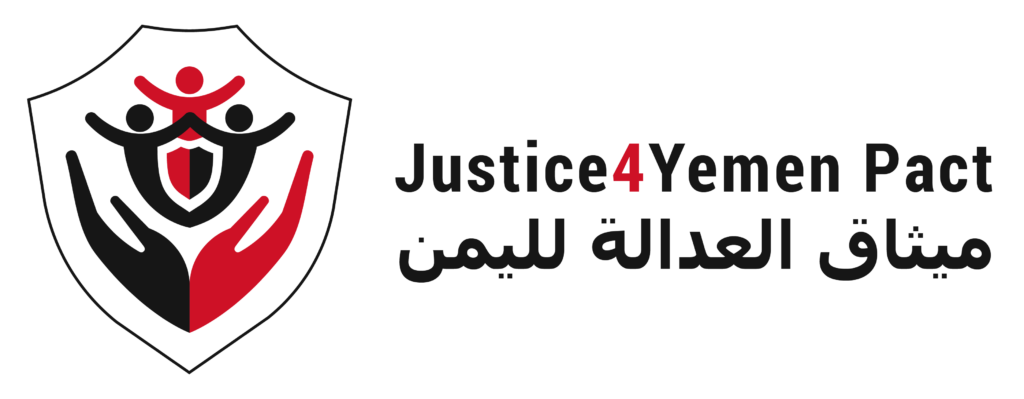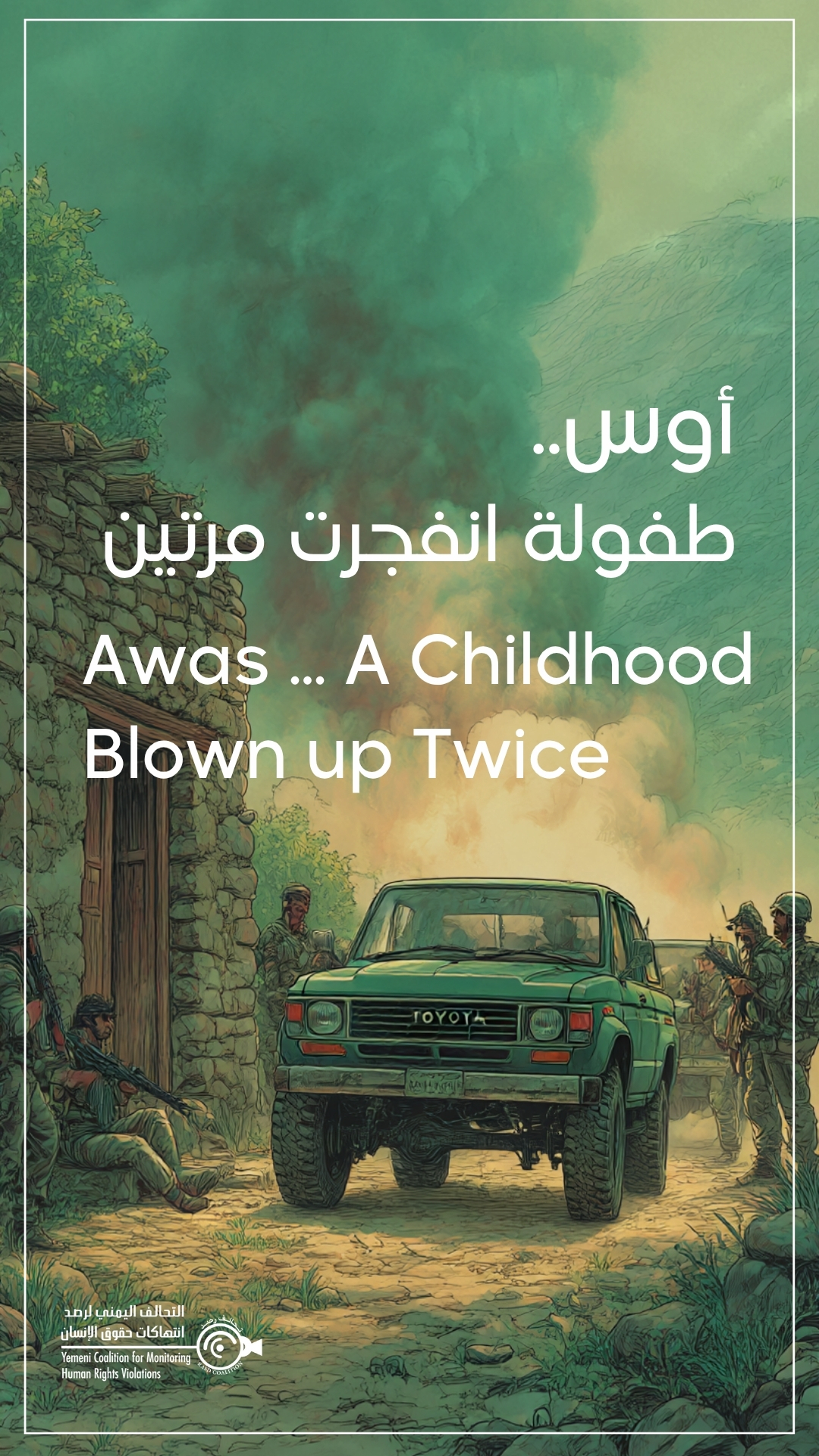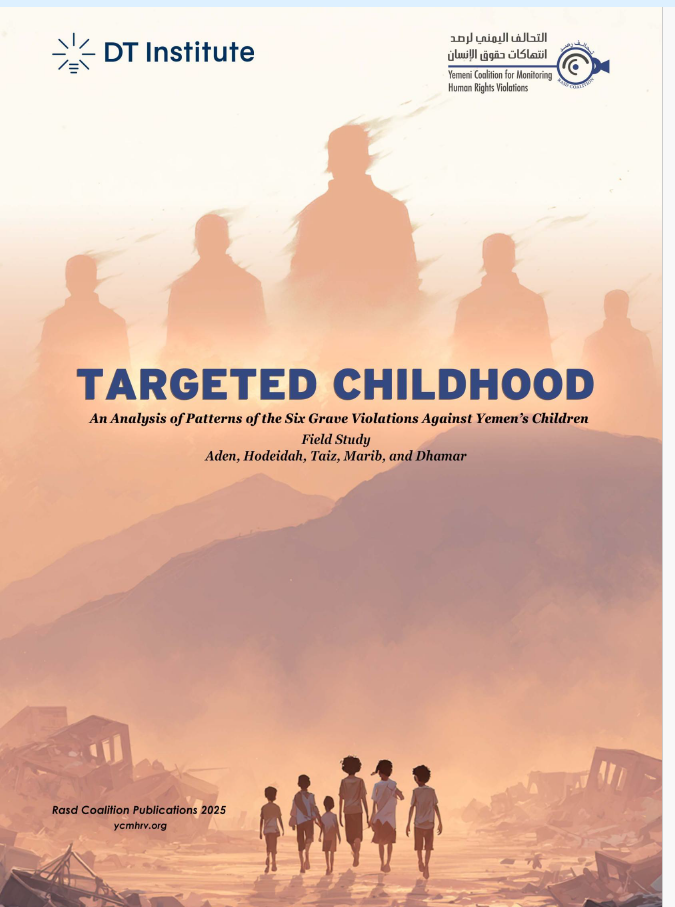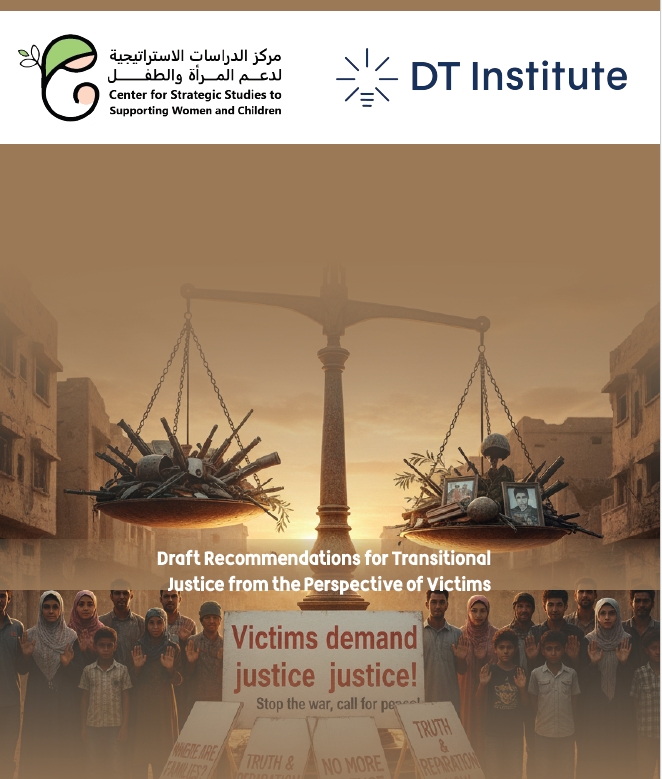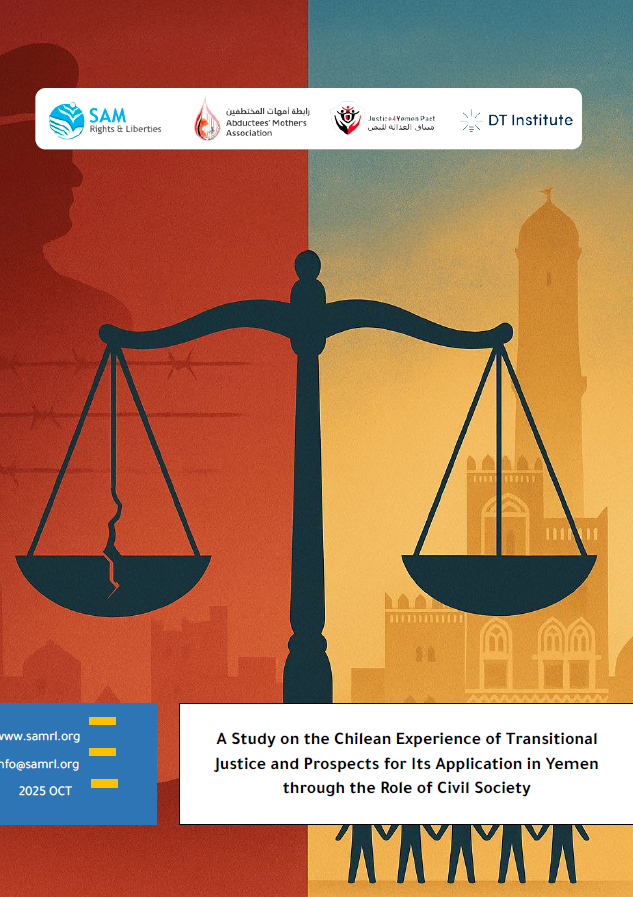| Incident: | Killing of a child and his father, injury to his brother and mother |
| Date: | May 10, 2025 |
| Location: | Ad Dan village, Mikhlaaf Ja’ar area, Kinda subdistrict, Wusab Al-Ali District, Dhamar Governorate – an area under Houthi control and known for the recruitment and mobilization of minors and youth into frontlines. |
| Type of Violation: | killing and injury of four family members, including two children. |
Prologue: A Night Wadi Wisab Will Never Forget?
In the quiet village of Al-Dan, nestled among the high mountains of Wisab, children craft their stories with pebble games and herding songs. But on the night of May 10, 2025, the echoes of gunfire and grenades shattered the silence, raiding the home of Sinan Al-Kindi. Four fully armed patrol vehicles from the Houthi-controlled police in Dhamar burst through the old wooden door. Seven-year-old Awas barely had time to hide in his father’s arms before a grenade exploded, tearing through his tiny body and his father’s right arm. His mother and younger brother collapsed, bleeding in silence on the clay floor. It was not just a crime—it was the beginning of another war: a war against truth.
The Lie: The Grenade That Never Dies
The warring parties weaponized the children’s deaths for media advantage, igniting public anger over the perceived desecration of innocent blood. Political exploitation of the tragedy intensified tensions, while international organizations failed to respond appropriately.
UNICEF issued an inaccurate statement, calling the event a “missile attack from both sides,” disregarding medical testimony and local reports. The UN envoy’s limited response offered only condolences, without any call for accountability or investigation—undermining its role in documenting violations.
Disinformation amplified the damage. Houthi outlets promoted narratives supported by fabricated human rights organizations like the Eye of Humanity Center, aimed at swaying international opinion. Meanwhile, the legitimate government emphasized its civilian-protection stance, yet lacked conclusive evidence.
By the next morning, two versions of the story emerged:
– Local media and eyewitnesses confirmed: The Houthis threw the grenade.
– Meanwhile, “26 September,” the official outlet of the Houthis, circulated a bizarre claim: “The father denied water to neighbors and hurled the grenade himself.”
As Awas and Sinan were buried—without autopsy, under direct orders from the Houthi group—pro-Houthi social media accounts at Facebook and X rushed to justify the crime. Some alleged that Sinan was mentally ill, others claimed he blocked the road and tried to harm security forces. But Rasd Coalition’s researcher revealed blatant contradictions: photos showed the father’s severed arm and disfigured face—injuries inconsistent with someone who allegedly threw the grenade.
A Tribe Stands Up to the Disinformation Machine
The Bani Kinda tribe refused to let the truth be buried with the victims. In a defiant public statement, they demanded:
– An independent investigation committee
– Forensic examination of the bodies
– Prosecution of those involved
The statement also revealed a key detail: “The raid happened without any judicial warrant,” and the prosecutor’s claim was found to be a lie, based on documents obtained by Rasd Coalition.
Doubling the Crimes: Murder and Defamation
Rasd Coalition’s open-source analysis revealed a chilling pattern:
Crime One: Killing innocent children like Awas.
Crime Two: Smearing their reputations through lies—to justify violence, protect perpetrators, and psychologically crush grieving families.
One field researcher said it best: “Disinformation is a weapon that magnifies pain—it kills the victim twice: physically and in dignity.”
The Houthi Disinformation Mechanism
Since seizing Sana’a in September 2014, the Houthi group has dominated public media, silenced opposition newspapers and TV channels, and shut down most news websites. According to a 2016 Al Jazeera report, nearly all independent and party-affiliated newspapers stopped publishing in early 2015 due to threats and repression. In their first year, Houthis blocked 120 local, Arab, and international news sites. By 2025, Yemen ranked third globally in terms of website censorship, with 62% of news sites blocked (Top10VPN data).
Concurrently, the Houthis invested heavily in biased media and art productions, promoting disinformation about opponents to control narratives in areas under their rule. The Yemeni Policy Center confirmed this effort: “Houthis aim to maintain an edge in public messaging and what they call ‘soft war’ propaganda.”
A study by MIT noted that using disinformation in warfare is not new—Nazi Germany perfected it. Houthi tactics include spreading fake news and twisting facts by presenting true information out of context. Evidence suggests their methods are disturbingly effective.
Awas… Is not Gone Yet
Awas is not just another statistic in Yemen’s war. His story is a symbol of systematic crimes fueled by propaganda, where victims are turned into “criminals,” truths are buried with bodies, and families are robbed of justice.
Rasd Coalition calls on the international community to initiate an independent investigation, hold Houthi leaders accountable in Dhamar, and protect Yemen’s children from the twin weapons of killing and media distortion. “Awas did not just die from the explosion… He died again when his right to truth was stolen.”
Final Word: Truth Under Fire
On May 10, 2025, Houthi forces raided the Al-Kindi household in Al-Dan, Dhamar. Gunfire and a grenade killed seven-year Awas and his father, injured his mother and brother, and unleashed a second war—one aimed at the truth itself. Houthi media outlets spread false stories: that the father blocked access to water or threw the grenade himself. The victims were buried without forensic exams—facts erased, evidence buried.
Awas’s case exposes a disturbing trend: bodily destruction followed by character assassination. While the killings are brutal, the propaganda is institutional, used to shield perpetrators and crush the pursuit of justice.
The cry from Bani Kinda tribe demanding an independent investigation and autopsy is more than a call for truth—it is a reminder: Yemeni children are killed twice—once by bullets, and again by lies.

